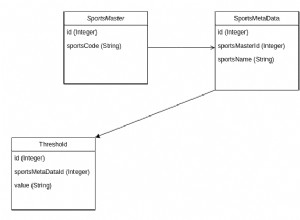dobrze znasz swoją listę, więc jest to prosty ciąg. i znasz swoją liczbę. można je zakleić w mysql Prepared Statement i wykonane.
Ale poniżej znajduje się lista i liczba umieszczona tylko w celach demonstracyjnych.
create table items
( id int not null
);
create table tags
( id int not null,
name varchar(50)
);
create table item_tags
( iid int not null,
tid int not null
);
insert items (id) values (1),(2),(3),(4);
insert tags(id,name) values (1,'cat'),(2,'animal'),(3,'has nose');
-- note, everything has a nose so far:
insert item_tags (iid,tid) values (1,1),(1,3),(2,1),(2,3),(3,2),(3,3),(4,1),(4,2),(4,3);
select i.id,count(i.id)
from items i
join item_tags junc
on junc.iid=i.id
join tags t
on t.id=junc.tid and t.name in ('cat','animal')
group by i.id
having count(i.id)=2
-- only item 4 has both cat and animal (note nose is irrelevant)




